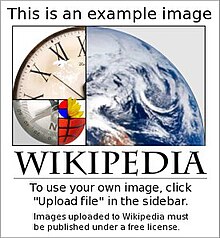| 此模板的文档不存在、不全面或不能详细描述其功能及/或其代码中的参数。请帮助扩充并改进其文档。 |
This infobox is designed to be used in articles that cover plot elements within a work of fiction. These can be props, events, jargon, concepts, or the like.
Usage
{{Infobox fictional artifact
| name =
| colour =
| image =
| image_size =
| alt =
| caption =
| source =
| source_type =
| company =
| first =
| first_ep =
| first_type =
| date =
| creator =
| episode_creator =
| genre =
| type =
| owner =
| uses =
| traits =
| affiliation =
}}
Parameters
- name is the common name used for the plot element. Since it is also likely to be the title of the article, this field can be omitted. If omitted, the infobox title will match the article's title.
- colour or color can be used to set the background color of the title and headers. The default is "silver". The entry in this field will normally be in the format "#eeddcc" (used for the example here), but {{Infobox television/colour}} or similar can also be used.
- colour text or color text can be used to set the text color of the title and headers. The default is "silver".
- image is the filename of the image (without File: or Image:). The template will add the markup to show the image.
- Example: image= example.jpg
- image_size is the width the image will display at. The template will only accept a number here. If left empty or if a string (such as "225px") is entered, the image will default to 250px wide.
- If you find the image to be too tall, reduce the size below 250px.
- The parameter is capped at maximum width of 250. Entering values grater than this will result in the default setting being used.
- alt needs to be updated with the "text alternative" of the image, to keep in line with Wikipedia:Alternative text for images. This is not the same as the caption. It should also be kept short, but needs to be descriptive of the image.
- caption is text which will appear below the image.
- source is the work of fiction - individual, series, or franchise - which featured the subject of the article. This is a required field.
- source_type specifies what exactly the source is. The template currently is set up to tailor some text for the following "source types":
- TV - for a television series
- films - for a series of 2 or more films
- novels - for a series of prose stories, this is not limited to just "novels"
- franchise - for a source that encompasses multiple media
- company is either the production company for a television show or film, or the publisher.
- first is where the subject first appears. Note that this is not to reflect the in-story timeline, but instead the first published, aired, or released work to feature the plot element. This should be the title of the series, novel, film, etc. that first featured the plot element, and the template will automatically italicize it. This is a required field.
- first_ep is the episode within a television series which introduces the plot element. The template will automatically put the title in quotes.
- first_type is a switch that should be set for "TV" or "film" if the first appearance was in a TV show or a film.
- date is the date when the first appearance was published, released, or originally aired.
- creator should list the creator of the overall work. In cases of franchises, television shows, film series and the like this should be the general creator(s) of the base work.
- episode_creatorshould list the creator(s) of the specific episode or story that introduces the plot element.
- genre is the genre of the underlying work.
- type is the type of plot element that the subject is. This should be concise and clearly cover what the plot element is.
- Example: Emergency Medical Hologram would list the "type" as: "A computer program that produces an interactive hologram."
- owner is used to indicate which type of stories the element appears in. This field should not be used if the element appears throughout the source stories.
- uses is the function of the element in the story. This should also be concise and clear and should not just duplicate the information under type
- Example: Emergency Medical Hologram would list the "uses" as "A hologram that acts as a supplemental or emergency doctor on a Federation starship."
- traits describe the specific nature of the element, including its appearance and any abilities or components.
- affiliation refers to people, groups, or other elements which may use or be somehow related to this element.
Example
| Communicator | |
|---|---|
| 跨媒體作品《Star Trek》中的要素 | |
 A 23rd-century communicator as used in Star Trek: The Original Series. | |
| 首次出現 | Star Trek 《The Cage》 (1964) |
| 開創 | Gene Roddenberry |
| 作品類型 | Science fiction |
| 虛構設定資料 | |
| 類型 | Communication device |
| 功能 | Allows subspace communication |
{{Infobox fictional artifact
| name = Communicator
| image = 20090704-1971 StarTrekTOSCommunicatorReplica.jpg
| image_size = 200
| caption = A 23rd-century communicator as used in ''[[Star Trek: The Original Series]].''
| source = [[Star Trek]]
| source_type = franchise
| first = [[Star Trek: The Original Series|Star Trek]]
| first_ep = [[The Cage (Star Trek: The Original Series)|The Cage]]
| first_type = TV
| date = 1964
| creator = [[Gene Roddenberry]]
| type = Communication device
| genre = Science fiction
| uses = Allows subspace communication
}}









